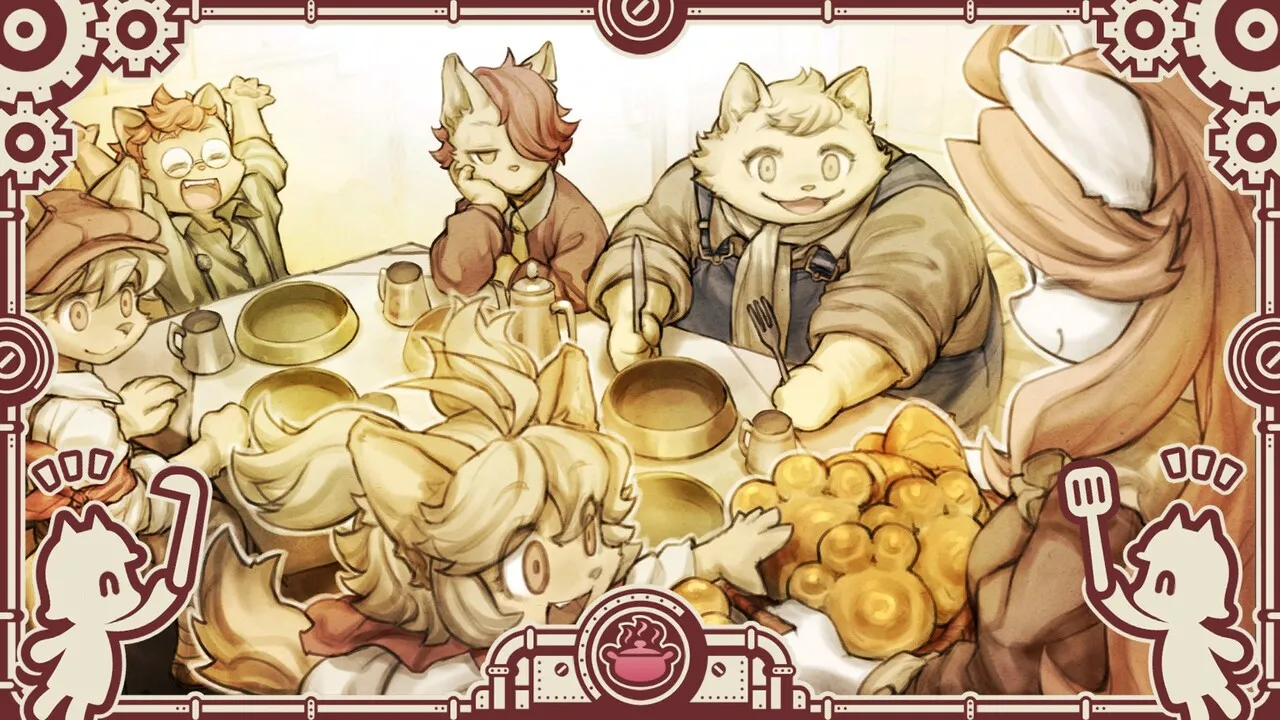
Fuga: Melodies of Steel – A Heartfelt Tactical RPG Adventure
Contents
Fuga: Melodies of Steel, developed by CyberConnect2 (known for Naruto Shippuden, Dragon Ball Z, and Demon Slayer games), offers a unique tactical RPG experience. While CyberConnect2 is often associated with anime tie-in games, Fuga: Melodies of Steel revives their lesser-known but charming Little Tail Bronx series. This new installment departs from previous entries, focusing on turn-based combat and a compelling narrative. Does this new direction hit the mark? Let’s delve into the world of Fuga: Melodies of Steel and find out.
A Colorful Journey of Loss and Hope
 alt: A screenshot of the game Fuga: Melodies of Steel showing the children inside the tank Taranis.
alt: A screenshot of the game Fuga: Melodies of Steel showing the children inside the tank Taranis.
Fuga: Melodies of Steel immediately captivates with its distinctive and evocative setting. The game opens in a peaceful countryside inhabited by anthropomorphic animals, abruptly shattered by the invading Berman army. Players take on the role of children who escape the devastation and discover the Taranis, a colossal tank left behind by an ancient civilization. Their mission: to rescue their families.
The game’s 12 chapters unfold at a deliberate pace, focusing on the children’s experiences. New characters are introduced efficiently, often within a single chapter, partially due to the game’s unique Soul Cannon mechanic (discussed later). Between battles, Intermission periods allow players to explore character relationships and personalities through Link Events. These interactions reveal nuanced dynamics, such as the grandparental love between Malt and Mei, and the contrasting perspectives of city-bred Kyle and rural Socks. Fuga: Melodies of Steel masterfully portrays these characters with depth and heart, enriching the narrative without overwhelming the main storyline.
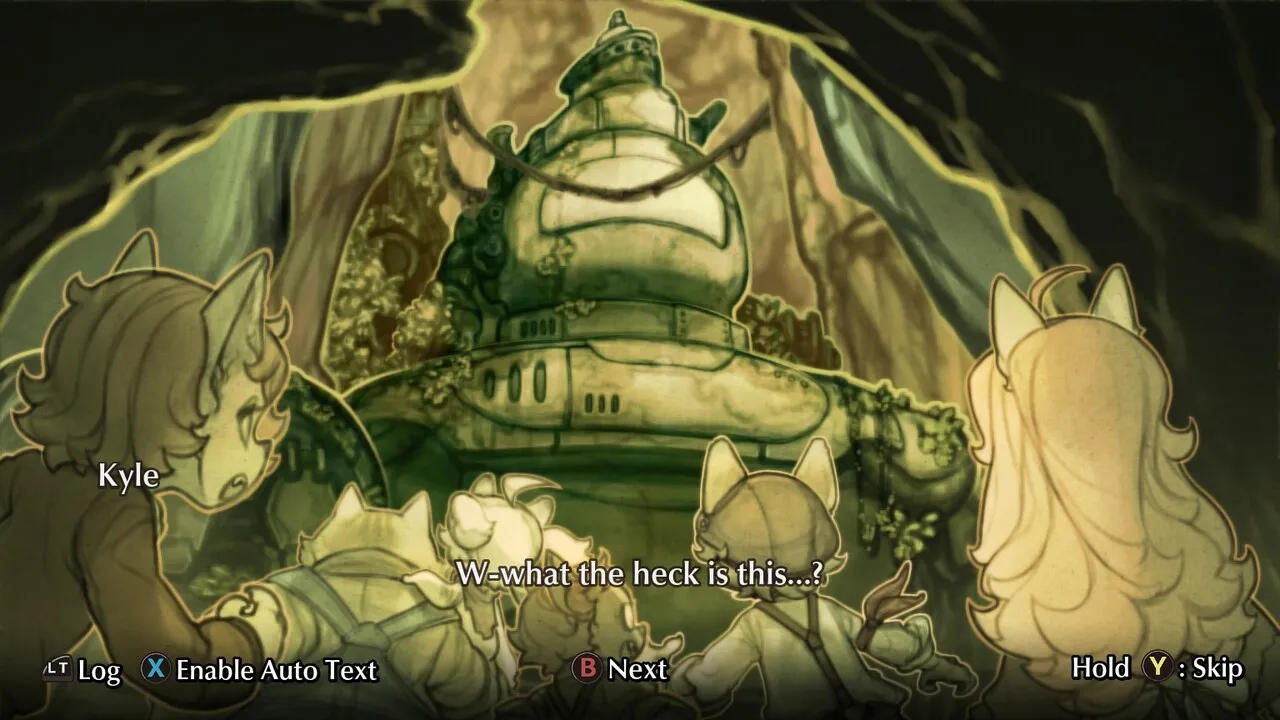 alt: A screenshot of Fuga: Melodies of Steel depicting the game's opening scene.
alt: A screenshot of Fuga: Melodies of Steel depicting the game's opening scene.
The game’s soundtrack further enhances the emotional journey. Boss battles are underscored not by adrenaline-pumping tracks, but by melancholic melodies that emphasize the futility of the conflict. The haunting vocals of “Flower on the Trails” and the even more sorrowful “Elegy of Winds,” specifically reserved for crucial plot twists, amplify the narrative’s emotional weight. These musical choices resonate deeply, leaving a lasting impression long after the battle ends.
Engaging Turn-Based Combat
 alt: A screenshot from Fuga: Melodies of Steel showing the combat interface.
alt: A screenshot from Fuga: Melodies of Steel showing the combat interface.
Fuga: Melodies of Steel employs a traditional turn-based combat system with innovative twists. Alongside the standard “rock-paper-scissors” weapon triangle, passive skills linked to character relationships, and the game’s defining feature, the Soul Cannon, add strategic depth. The Soul Cannon allows players to instantly defeat enemies by sacrificing a child, a heavy price with lasting consequences. While not mandatory, its presence adds a moral dimension and encourages strategic resource management.
Combat focuses on the Taranis’s single health bar and a shared energy pool for the three active characters, streamlining information for the player. Despite this simplification, combat remains engaging thanks to the game’s impressive roster of 12 playable characters. Six characters can participate in battle simultaneously, with three actively fighting and three providing passive support. Each character boasts unique skills and stats, ensuring a diverse range of playstyles. Malt, wielding a powerful cannon, sacrifices speed for high damage, while Hanna excels as a healer with crowd control abilities.
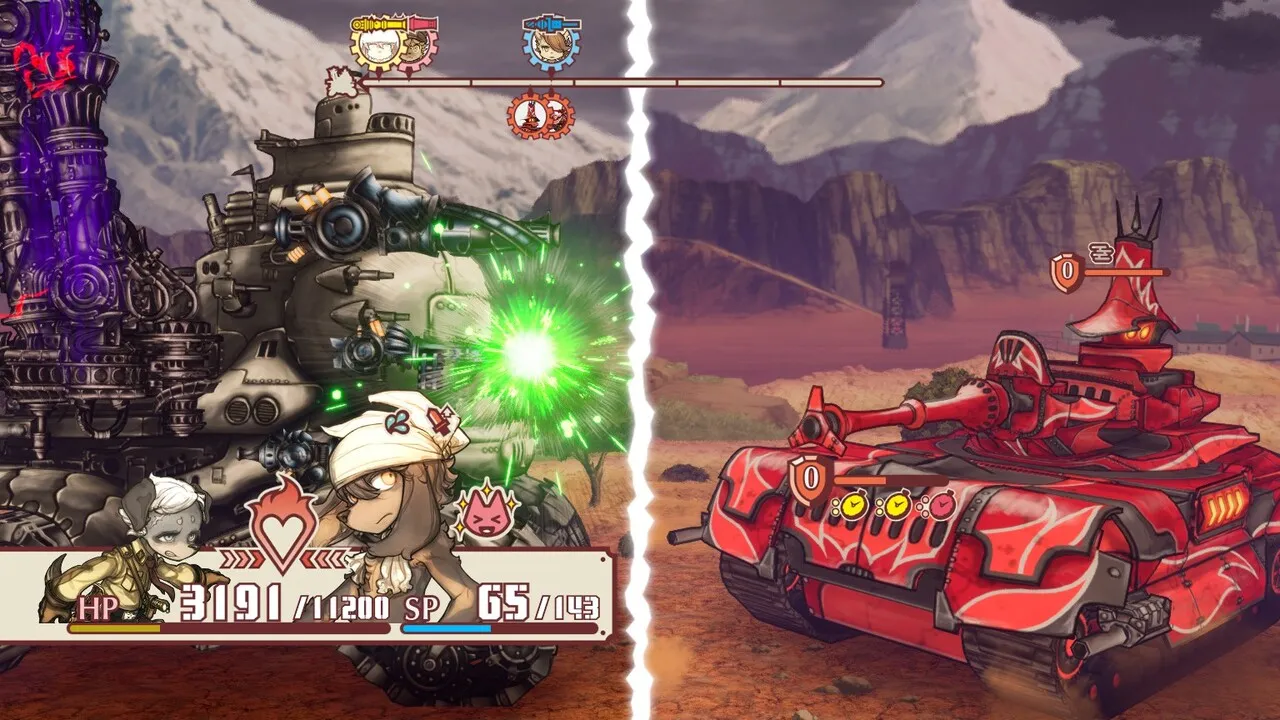 alt: A screenshot of Fuga: Melodies of Steel showcasing the characters inside the tank.
alt: A screenshot of Fuga: Melodies of Steel showcasing the characters inside the tank.
The ability to completely swap teams every three turns further enhances strategic flexibility. Link Attacks, triggered by strong character bonds, and Hero Mode, providing temporary stat boosts, add another layer of tactical complexity. Fuga: Melodies of Steel’s combat system is simple to grasp yet offers surprising depth and variety.
Exploration and Progression
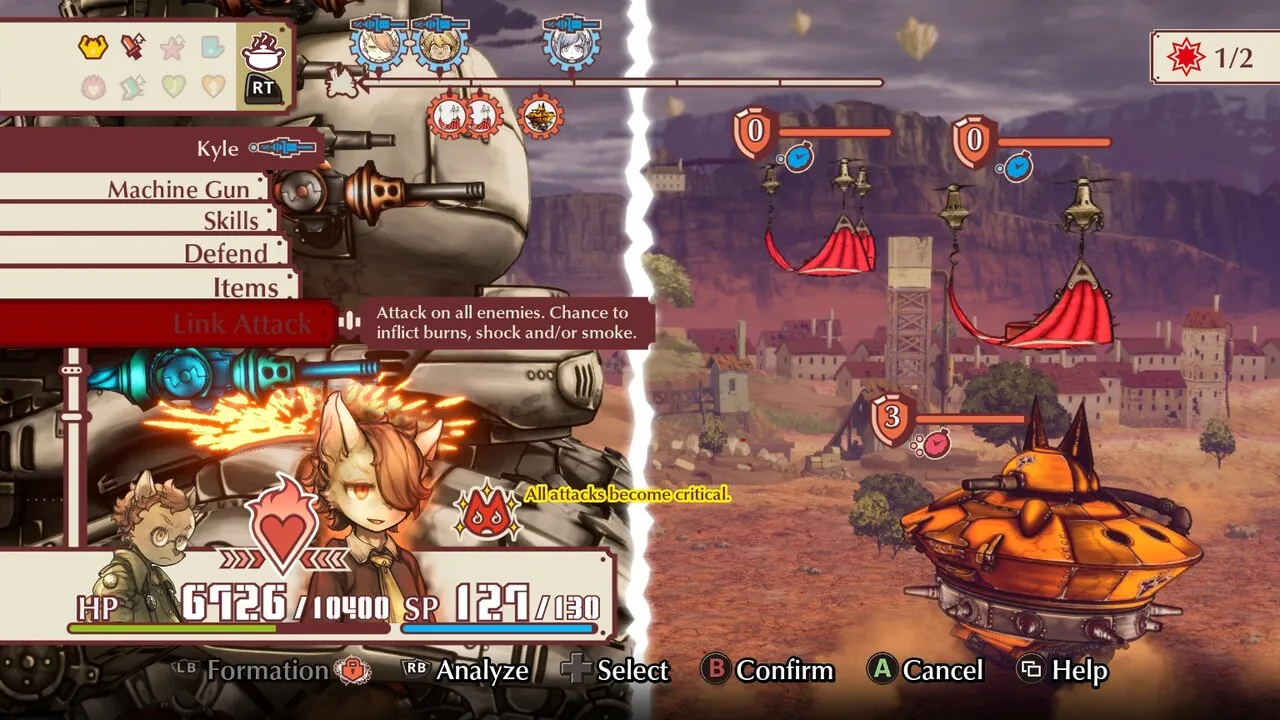 alt: A screenshot from Fuga: Melodies of Steel showing the combat targeting system.
alt: A screenshot from Fuga: Melodies of Steel showing the combat targeting system.
Fuga: Melodies of Steel’s adventure unfolds linearly, with clear indications of upcoming encounters and resources. However, branching paths at key junctions offer varying difficulty levels, allowing players to adjust the challenge. Higher-difficulty routes yield greater rewards, providing a sense of risk and reward. Dungeons present puzzle-solving elements, often requiring specific items to progress, adding another layer to exploration. These seemingly simple puzzles increase in complexity, demanding careful resource management to avoid missing valuable items crucial for upgrading the Taranis.
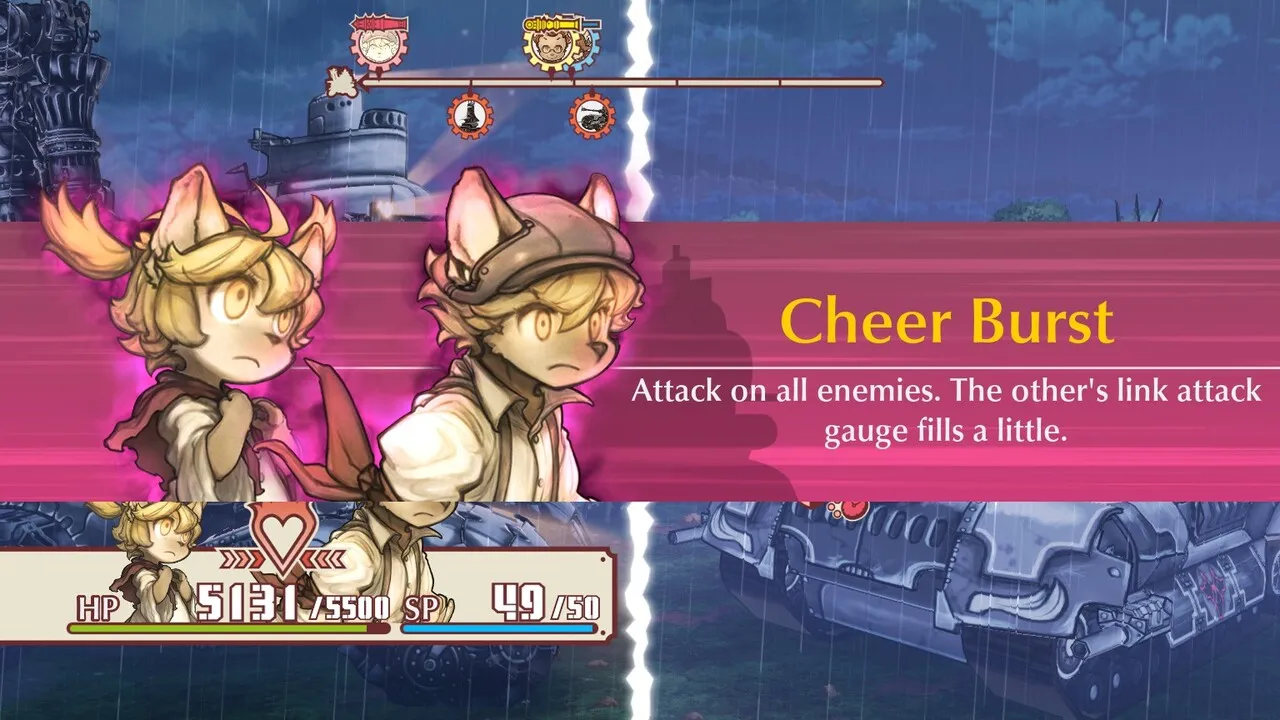 alt: A screenshot from Fuga: Melodies of Steel displaying the world map.
alt: A screenshot from Fuga: Melodies of Steel displaying the world map.
Intermission periods allow players to engage in activities like cooking, farming, upgrading the Taranis, and strengthening character bonds. Limited Action Points (AP) necessitate careful planning to maximize efficiency. While these activities primarily focus on character and Taranis progression, their diverse nature enriches the gameplay experience.
Untapped Potential
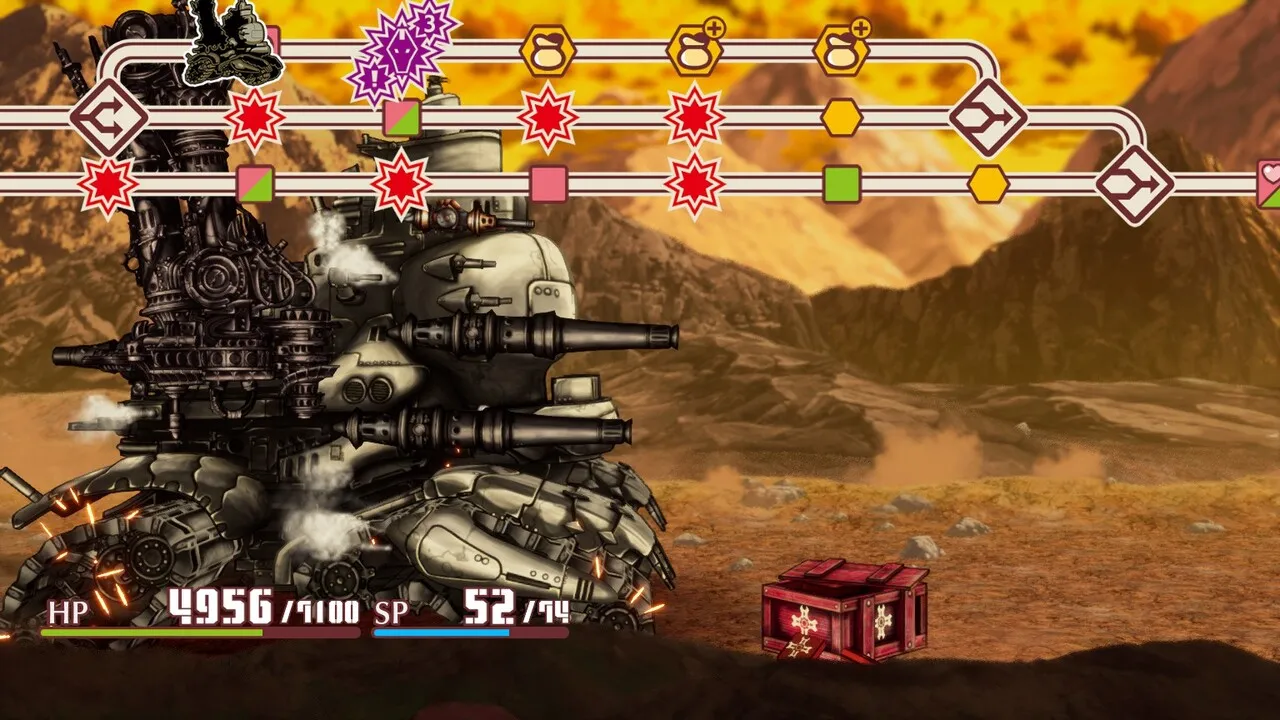 alt: Fuga: Melodies of Steel screenshot showcasing the in-game environment.
alt: Fuga: Melodies of Steel screenshot showcasing the in-game environment.
Despite its strengths, Fuga: Melodies of Steel suffers from underutilized potential. Supporting characters and even antagonists lack depth, often serving as one-dimensional villains. While this might cater to a younger audience, it ultimately diminishes the narrative’s complexity. The item system also feels clunky, lacking detailed descriptions and a clear purpose. The confusing barter-based trading system, without a standard currency, adds unnecessary complexity.
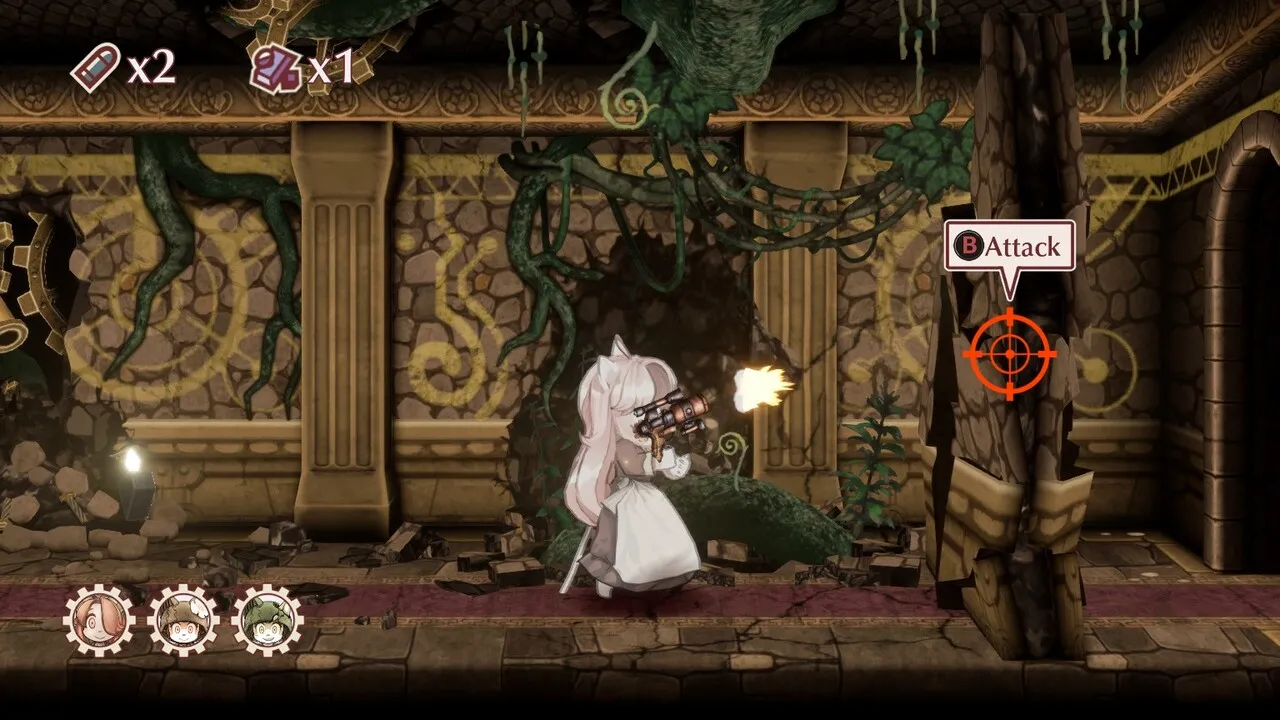 alt: A screenshot from Fuga: Melodies of Steel during an exploration sequence.
alt: A screenshot from Fuga: Melodies of Steel during an exploration sequence.
Conclusion
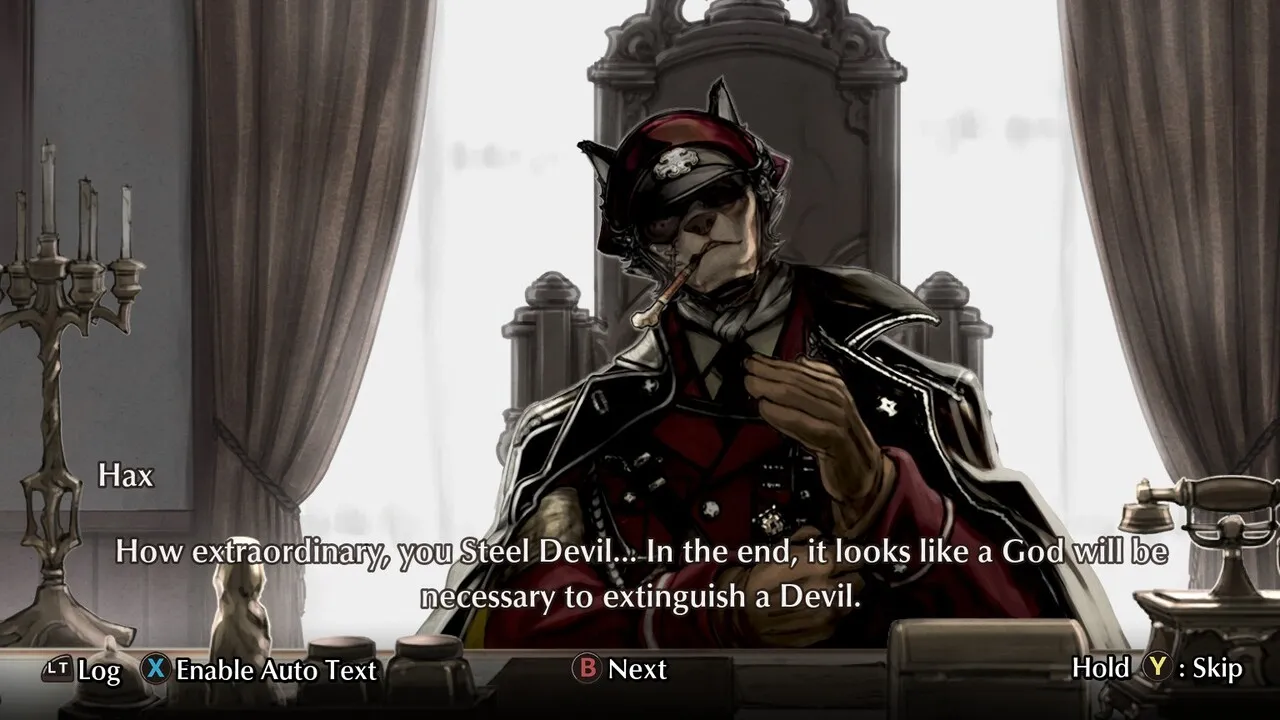 alt: A screenshot of Fuga: Melodies of Steel during a dialogue sequence.
alt: A screenshot of Fuga: Melodies of Steel during a dialogue sequence.
Fuga: Melodies of Steel shines with its heartfelt narrative, charming characters, and engaging turn-based combat. The unique Soul Cannon mechanic adds a compelling moral dilemma, while the diverse cast and strategic options keep combat fresh. The game’s exploration and progression systems, though linear, offer satisfying customization and a sense of agency. While some areas, like character development and the item system, could benefit from further refinement, Fuga: Melodies of Steel delivers a memorable and emotionally resonant tactical RPG experience.





Comments (0)